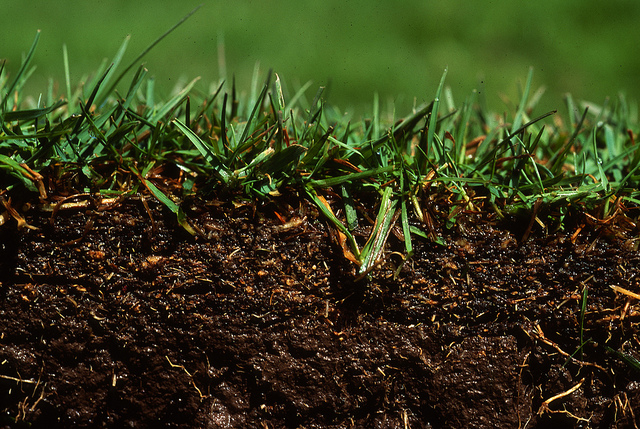
In Connecticut, we have to make the most of our scant summer months by planting cold-hardy, attractive grasses. These grasses must be both drought and moisture tolerant, due to unpredictable weather patterns and varying levels of precipitation. Grasses are divided into two categories: cool and warm season grasses. Cool season grasses can survive harsh winter weather, while warm-season grasses survive the cold months, but are only attractive during the hottest months of the year. Some types of grasses, such as bentgrasses, are favored by some gardeners but aren’t included in this list due to the difficulty in establishing them on lawns long-term. Here are seven common grass types for your lawn in Hartford, CT.
1. Kentucky Bluegrass
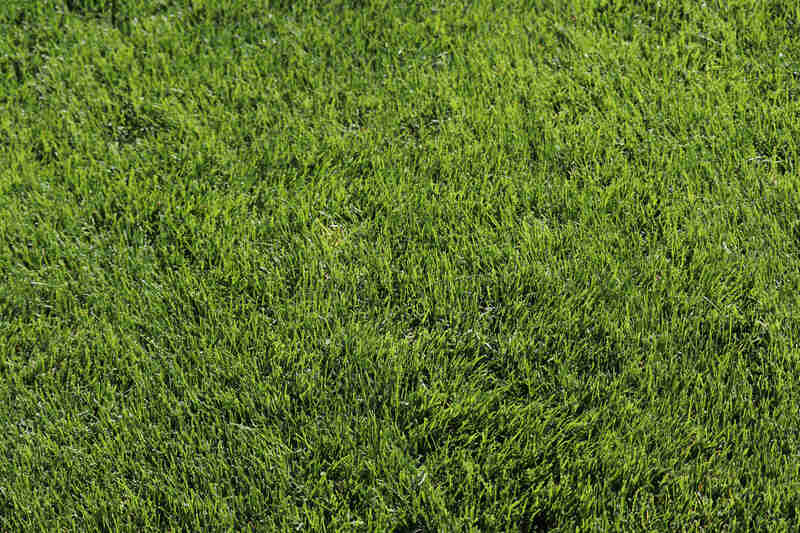
- Scientific name: Poa pratensis
- Sunlight: Direct sunlight preferred, but can grow in partial shade
- Moisture level: High levels of irrigation
- Soil Requirements: Requires well-drained, moist soil
- Appearance: Dark green color with medium texture and high density
- Benefits: Extremely cold-tolerant and attractive
- Disadvantages: Can be disease and insect-prone
Kentucky bluegrass is a high quality, sod-forming grass. It is shallow rooted, requiring great amounts of water, but is extremely cold tolerant. It spreads by rhizomes, allowing it to repair itself easily and recover rapidly from wear and compression.
Grass Seed Options:
– Jonathan Green (11970) Blue Panther Kentucky Bluegrass Grass Seed (3 lbs.)
– SeedRanch Midnight Kentucky Bluegrass Seed (5 lbs.)
– Jacklin Seed – Biltmore Blue Blend – 100% Kentucky Bluegrass (5 lbs.)
2. Rough Bluegrass
- Scientific name: Poe trivialis
- Sunlight: Shade
- Moisture level: Wet
- Soil Requirements: Damp soils
- Appearance: Yellow-green in color with a fine texture
- Benefits: Establishes rapidly and requires low amounts of fertilizer
- Disadvantages: Unattractive coloring, poor drought tolerance
Rough Bluegrass is less popular for home lawn mixes, as it has poor wear tolerance and a less desirable color than Kentucky Bluegrass. It also doesn’t tolerate salt well, making it difficult to grow near areas where salt is frequently spread. However, it works well in areas not needing mowing.
3. Creeping Red Fescue
- Scientific name: Festuca rubra
- Sunlight: Shade tolerant
- Moisture level: Drought tolerant; does not tolerate wet soils
- Soil Requirements: Hardy grass can live in dry, sandy, low pH and low-fertility soils
- Appearance: Fine-bladed grass with a medium to dark green color, can be off-color in the summer heat
- Benefits: High-density grass that has excellent shade tolerance
- Disadvantages: Recuperates poorly after wear or injury
This delicate fescue has narrow, bristle-like blades with a fine texture. Although it has a luscious, verdant appearance for many months throughout the year, it is susceptible to the buildup of thatch and over-fertilization of nitrogen. Instead, it prefers infertile soils.
Grass Seed Options:
– Outsidepride Legacy Fine Fescue Grass Seed (5 lbs.)
– Eretz Creeping Red Fine Fescue Seed (choose your size)
– Outsidepride Creeping Red Fine Fescue Grass Seed (25 lbs.)
– Outsidepride Hard Fine Fescue Grass Seed (10 lbs.)
4. Tall Turf Fescue
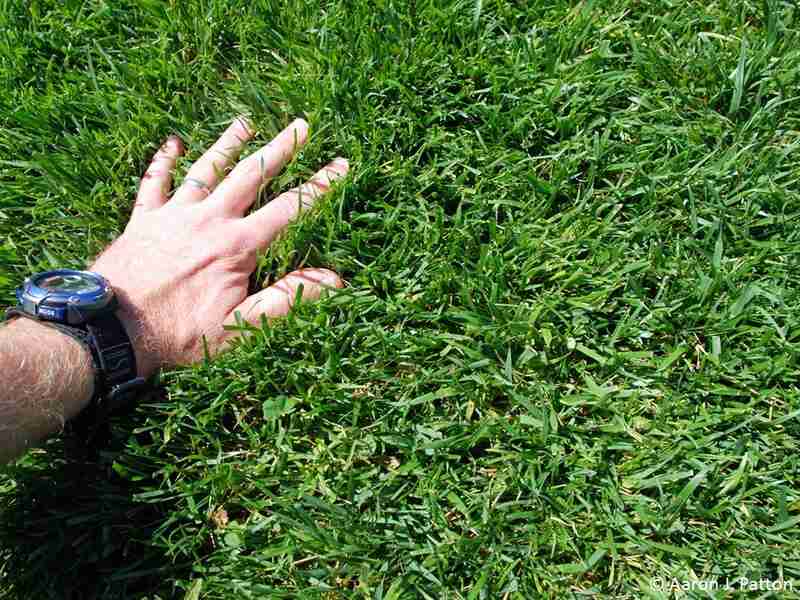
- Scientific name: Festuca arundinacae
- Sunlight: Shade tolerant
- Moisture level: Drought tolerant
- Soil Requirements: Low to moderate fertility needs; needs space to grow as it is deep-rooted
- Appearance: Dark green color with fine texture and thinner blades
- Benefits: Excellent salt tolerance and color retention under hot conditions
- Disadvantages: Susceptible to grey leaf spot disease
This fescue is a bunch-type grass that spreads easily and is highly drought tolerant. It has high wear tolerance and the ability to cover from both hot and cold weather. It manages to retain its verdant hues under the hottest conditions, but can be susceptible to injury under extremely cold conditions.
Grass Seed Options:
– Triple-Play Tall Fescue Grass Seed Blend (5000 sq ft)
– Eretz Kentucky 31 K31 Tall Fescue Grass Seed (choose your size)
– Pennington The Rebels Tall Fescue Grass Seed Mix (7 lb.)
5. Perennial Ryegrass
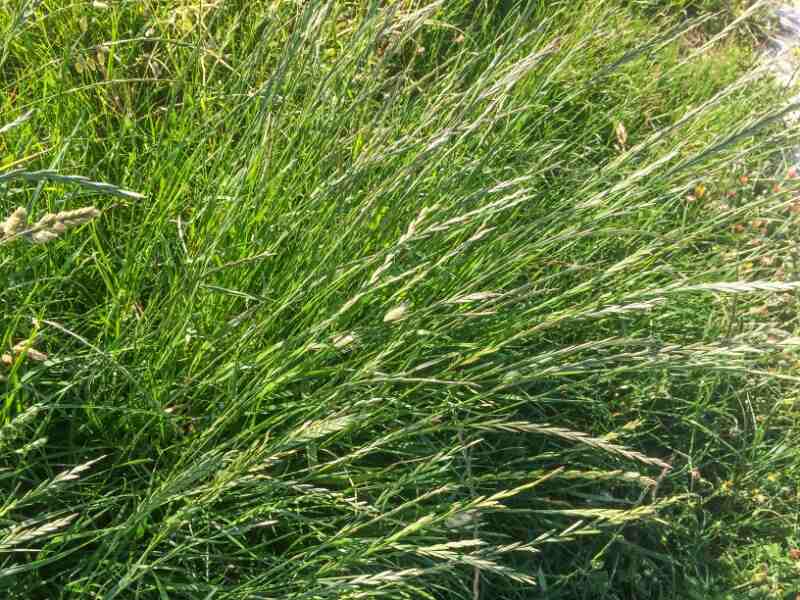
- Scientific name: Lolium perenne
- Sunlight: Full sun to partial shade
- Moisture level: Moderate moisture
- Soil Requirements: Drought resistant
- Appearance: Medium to dark green color with medium to fine-leaves
- Benefits: Good heat and wear tolerance
- Disadvantages: Can be disease-prone and does not tolerate freezing well if flooded or exposed to wind
This bunchgrass germinates quickly and establishes itself in much less time than similar grasses. It performs best in moderate weather, such as cool summers and mild winters. It is a fine performer on its own, with excellent mowing qualities and a vibrant bright green color, but tends to outcompete other grasses, making it less than ideal for a mixture.
Grass Seed Options:
– Outsidepride Perennial Ryegrass Seed (5 lbs.)
– Eretz ProTurf Perennial Ryegrass Fine Lawn Seed (choose your size)
6. Zoysiagrass

- Scientific name: Zoysia japonica
- Sunlight: Full sun
- Moisture level: Drought tolerant
- Soil Requirements: Does not grow well in moist conditions or with other species
- Appearance: Brown into the spring and during the fall with stiff hairs
- Benefits: Excellent resistance to wear; salt-tolerant
- Disadvantages: Can build up thatch and outcompete other grasses
Zoysia is the only warm-season grass that is readily grown on lawns in Connecticut. It is not a great option when grown in a mixture, as it is highly aggressive and has a brown appearance except for during the hottest months of the year. However, it is salt-tolerant and is one of the few kinds of grass that looks healthy during drought conditions.
Grass Plug and Seed Options:
– Zoysia Plugs (50 Large Grass Plugs)
– Zoysia Plugs (50 Full & Lush Grass Plugs)
– Zoysia Plugs (100 Plugs)
– Zoysia Emerald Grass Seeds (1/8 lb. of seeds)
– Zenith Zenith Grass Seeds (1/8 lb. of seeds)
For the most attractive and healthy-looking lawn, plant a mixture of grasses. While cool season grasses might go dormant during the hot months of summer, giving them a dead, brown appearance, heat tolerant species will thrive during these periods. In addition, pests that may attack one type of grass generally won’t go after another, allowing for optimal survival rates and a lawn that looks fresh and attractive throughout the year.
For more help with your grass types care, visit our Hartford lawn care page!
LawnStarter participates in the Amazon Services LLC Associates Program, an affiliate advertising program. LawnStarter earns revenue from products promoted in this article.
Feature image source: Oregan State University / Flickr / CC BY-SA 2.0
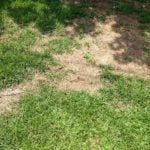
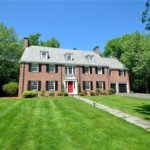
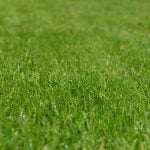
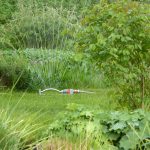
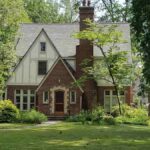
![Enhulk Pro Series 930 CFM Cordless Leaf Blower [Review]](https://www.lawnstarter.com/blog/wp-content/uploads/2023/11/Enhulk-930-Leaf-Blower-Hero-Image-150x150.jpg)